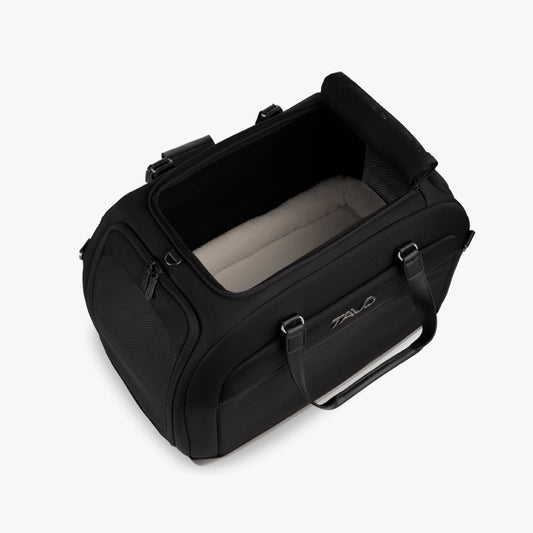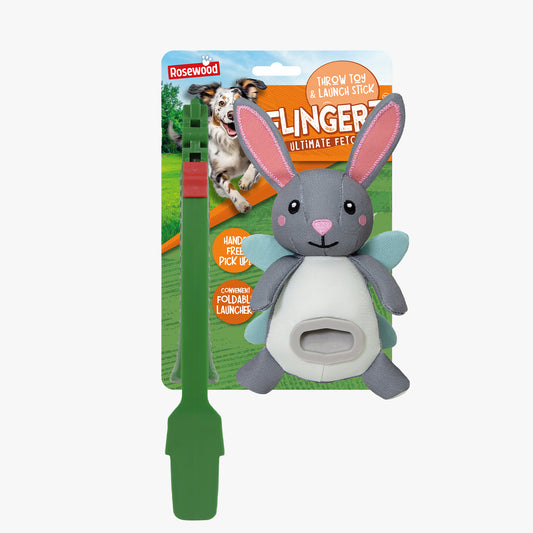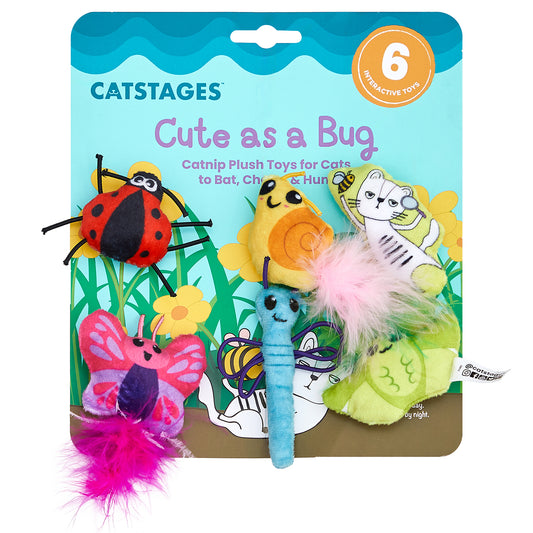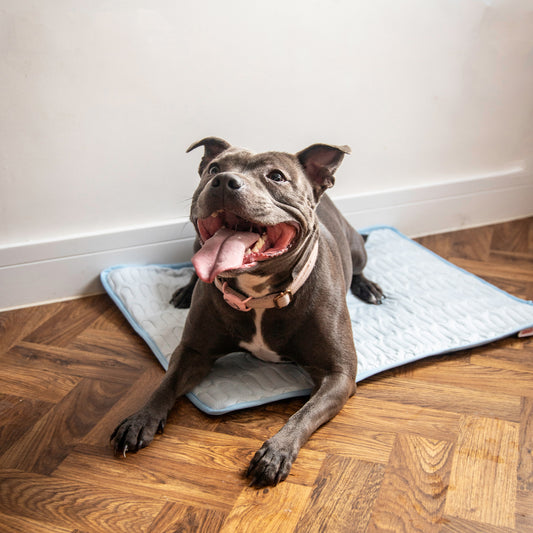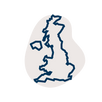Frenchie’s are an increasingly popular breed amongst pet owners. A small breed of domestic dog, first bred in the 1800s as a result of a cross between bulldog ancestors imported from England and local ratters in France. Like many companion breeds, French Bulldogs make wonderful lapdogs and thrive on human interaction. They are also good with children, having patient and affectionate temperaments. If you are looking to bring a French Bulldog home for the first time or already have one, take a look at our ultimate Frenchie guide and learn everything you need to know about Frenchie’s and all the essentials you need.
Features
| Breed | French Bulldog |
| Breed Group | Utility Breed Group |
| Breed Size | Small |
| Height | 15.5"-18.5"/46cm - 55cm |
| Length | 18" - 21.5" / 46cm - 55cm |
| Weight Range | 7.3kg - 12.7kg |
| Coat Length | Short |
| Coat Colours | Brindle, Light Brindle, Dark Brindle, Brindle & White, Fawn, Fawn & White, Fawn Pied, Fawn With Black Mask, Pied |
| Lifespan | 10-12 Years |
How Big Does A French Bulldog Get?
French Bulldogs are small breed dogs and when fully grown they usually measure between 39 and 47cm when standing.
Male Frenchie’s usually weigh between 9 and 12.7 kg and female Frenchies 7.3 – 10.9kg.
Being small dogs we usually recommend a medium size in L&L products but check the products sizing guides or speak to our customer service team for more guidance.

What Do French Bulldogs Look Like?
Frenchie’s are known for their flat faces and bat like ears. They are sturdy, well-built dogs with smooth, fine coats.
Common coat colours include Brindle, Light Brindle, Dark Brindle, Brindle & White, Fawn, Fawn & White, Fawn Pied, Fawn With Black Mask and Pied.
Are French Bulldogs Easy To Train
French bulldogs may be small, but they are highly intelligent. This makes them great to train, as long as you keep the training fun, they will be highly receptive to training. They will thrive on positive reward-based training, having plenty of treats and praise will make training them so much easier!
They are a clean breed making them on the easier side to toilet train. However, remember that as a small breed they have small bladders (especially as puppies) so taking them out regularly is key to successfully toilet training your Frenchie.
As with all dogs, consistency is key! Establish a routine from the day they come home and stick to it as much as possible.

Health Issues
Keeping any potential health issues in mind from the start is a great idea, it means you can put preventative measures in place and pick up on any warning signs early on.
Being a flat-faced breed one of the main health issues that Frenchie’s may have is breathing problems due to not being able to pant properly to cool themselves down. You’ll likely notice them breathing a little heavier when exercising or in warmer weather. You can help their symptoms by putting them in a harness to walk rather than a collar which may put added pressure on their neck, keep them inside and cool on warmer days and keep their walks short and sweet.
Frenchies can be prone to dry, cracked noses and paws, especially in cold weather. Nose Balm and Paw Balm will help keep their skin moisturised and help any cracks heal. We have some great options here at L&L and particularly love the Animology Paw and Nose Balm or the Be:Soft Nose and Paw Balm.
Other health problems to watch out for with Frenchie’s are skin allergies such as dermatitis, corneal ulcers, intervertebral disc disease (IVDD) and Degenerative Myelopathy.
How To Groom A Frenchie
As we mentioned above, Frenchies are usually a clean breed so don’t need weekly washes, we recommend washing them when they are visibly dirty. Frenchies can be prone to skin allergies so a shampoo for sensitive skin can help to manage them.
We love the PetPlex Derma Doctor shampoo for sensitive skin.
With all their fabulous folds on their face, it’s important to be careful whilst washing them, any moisture that gets trapped in between them may lead to an infection. Why not try using a dog-friendly wipe such as the Earth Rated Grooming wipes to clean in between them?
We recommend a weekly brush just to help remove any excess fur and debris which may have built up in their coat. For fine Frenchie coats rubber brushes or gloves are great, the Ancol Ergo Grooming glove is a pawfect fit for your bulldogs luscious locks.
To help keep eye problems at bay try Vet’s Best Eye Cleaning Pads, they are safe and easy to use and contain aloe vera which helps to soothe their eyes and remove any tear stains.
How Much Exercise Should A Frenchie Have
What doggy doesn’t love walkies? Whilst French Bulldogs don’t require the longest walks of all dog breeds, they do need some short walks to help keep them healthy.
Fully grown French bulldogs will need up to an hour’s exercise a day. We recommend splitting this into a few shorter walks to help with their breathing.
It’s a great idea to let your Frenchie have some time to play off-lead to help keep their mind active, this will give them plenty of opportunities to sniff around and will keep them mentally stimulated.
Being such intelligent dogs they need plenty of things to keep their mind active, a great boredom buster is the Nina Ottosson Dog Casino Puzzle.
Being a smaller dog, they aren’t suited to intense canine sports like agility in the same way that larger breeds are. They’re better for a slower-paced workout that is short and sweet.
We would suggest a harness rather than a collar, as collars can restrict their breathing. Harnesses also offer great comfort and control when lead training.
Frenchie Nutrition
Bowls are a necessity for every breed of dog. Keep water down at all times and feed your dog according to the guidelines set out by your chosen food brand.
We suggest a raised design for French Bulldogs and other breeds with deep chests to make them comfortable at feeding time.
These Scruffs bowls are designed specifically for flat-faced breeds so are perfect for feeding your Frenchie.
Some great food options for your Frenchie are James Wellbeloved Fish & Rice Adult Dog Food or the Royal Canin French Bulldog range – they have both puppy and adult varieties so can follow your Frenchie’s growth and development.
Best Toys For French Bulldogs
French Bulldogs are not the most active breed of dog, but they do require some exercise and will enjoy some playtime too. A couple of different dog toys will keep them occupied, aid brain development and stop them from chewing furniture in boredom.
The Little Buddy Heart Beat Sheep is absolutely for puppies. It will mimic the heartbeat of mum to help settle your new arrival.
We also love KONG toys as they are good for chewers and promote healthy teeth whilst relieving boredom.
Best Beds For French Bulldogs
There are a number of styles to consider when buying a bed for your new French Bulldog. The best option for puppies is a dog crate with matching cushion, cover and bumper set. The crate will keep them safe if you need to leave them on their own and is also great for potty training. The cover set will turn the bare, draughty cage into a sumptuous, cosy bed. When your puppy first comes home, you could buy a cosy & calming puppy bed and place puppy pads in the other half. Then as they grow older and become home trained, you can swap to a full size cushion. We’d suggest the medium size crate as this will then last them into adulthood.
Other options if you’re not looking to crate train your Frenchie or if you have an grown up Frenchie who no longer wants to sleep in their crate are our high-wall beds or box beds. High walls are great for frenchies who love to snuggle and curl up, where as box beds suit those who love to stretch out. Whichever bed you go for we recommend a medium size in L&L beds so they have plenty of room.
Frenchie Shopping List
Hopefully this guide will have given you some ideas of the key things to buy when getting ready for your new French Bulldog. Oh and if you want to treat yourself why not get the Wagging Tail French Bull Dog Clock by The Labrador Company? For even more suggestions, visit our French Bulldog Breed Page which has some must-have items for all Frenchie owners. If you need any help or advice with your order don’t hesitate to contact us, we’re always happy to help as best we can.


























































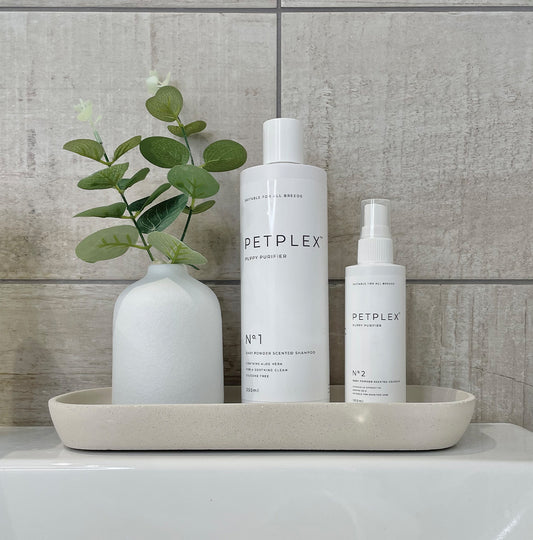
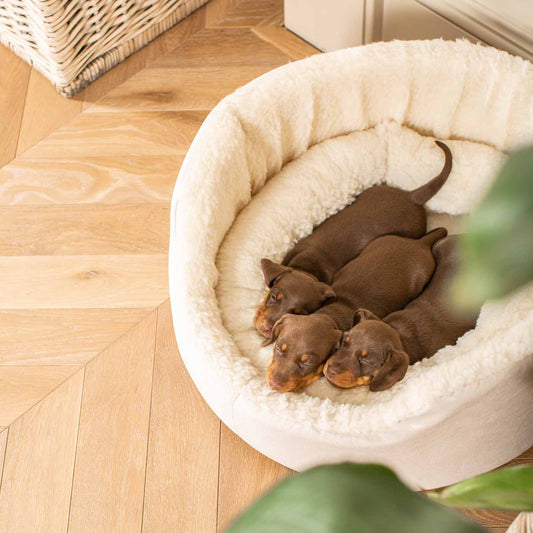
![[colour:mink boucle] Luxury Boucle Pet Scent Blanket collection, In Stunning Mink Boucle. The Perfect Blanket For Dogs, Available at Lords & Labradors](http://www.lordsandlabradors.co.uk/cdn/shop/products/Mink-Boucle-Scent-Blanket.jpg?v=1660130492&width=533)







